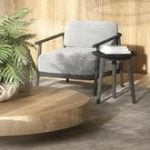Are you looking to learn how to decorate mandir at home? In Hindu households, a mandir holds a special significance as a sacred space for prayer and worship. It is not only a place of devotion but also a reflection of one’s spirituality and cultural heritage. Decorating the mandir with care and attention to detail is an essential part of creating a serene and spiritual atmosphere for daily rituals and prayers.
Choosing the perfect location for the mandir in your home is crucial for creating a harmonious and peaceful environment for worship. Factors such as lighting, space, and accessibility for daily prayers and rituals should be taken into consideration when selecting the ideal spot for your mandir. Whether you prefer a traditional design or a more modern minimalist style, there are endless possibilities to create an inspiring and beautiful sacred space in your home.
When it comes to decorating the mandir, the choice of materials and decor plays a significant role in bringing out its beauty. From wood and marble to metal, there are various options to consider for constructing the mandir.
Additionally, incorporating iconography and symbols representing different deities in Hinduism can add depth and meaning to the design of the sacred space. Creating the right lighting and ambiance is also essential for setting the tone in the mandir, with incense, candles, and other sensory elements playing an important role in creating a serene atmosphere conducive to prayer and meditation.
In this article, we will explore different aspects of decorating a mandir at home with devotion and attention to detail. From choosing the perfect location to incorporating personal touches, we will provide inspiration and practical tips on creating a beautiful sacred space in your home that reflects your spiritual beliefs and brings peace into your daily life.
Choosing the Location
When decorating a mandir at home, one of the most important factors to consider is the location within your living space. Choosing the perfect spot for your mandir can make a significant impact on the overall ambiance and functionality of the sacred space. Here are some tips to help you select the ideal location for your mandir:
- Consider natural lighting: A well-lit area is essential for creating a serene and inviting atmosphere in the mandir. Look for a location near a window or where natural light can easily illuminate the sacred space.
- Allocate sufficient space: The mandir should have enough room to accommodate daily prayers, rituals, and offerings. Choose a location that provides ample space for you to sit comfortably while performing religious activities.
- Accessibility: Selecting a spot that is easily accessible for daily use is crucial. Whether it’s in a dedicated room or a prominent area in your living room, ensure that the mandir is conveniently located for your regular devotional practices.
By taking these factors into consideration, you can ensure that your mandir not only enhances the spiritual energy of your home but also provides a practical and functional space for daily prayers and rituals. Remember to personalize the location based on your family’s needs and religious practices, creating a serene sanctuary where you can connect with divinity and find peace amidst life’s chaos.
Traditional vs Contemporary Mandir Design
Choosing a mandir design is an important decision for Hindu households, as it reflects the family’s beliefs and traditions. Traditional mandir designs often feature intricate carvings, ornate patterns, and elaborate structures, reflecting the rich cultural heritage of India. These designs are timeless and evoke a sense of history and reverence.
On the other hand, contemporary mandir designs embrace simplicity, clean lines, and minimalist aesthetics. The emphasis is on sleek surfaces, understated elegance, and functional elements that blend seamlessly with modern home decor.
Traditional mandir designs are often made from materials like richly carved wood, marble, or metal, reflecting a sense of opulence and grandeur. On the other hand, contemporary mandirs may be constructed from materials such as glass or steel to achieve a more modern look. In terms of decor, traditional mandirs may feature intricate carvings of deities, floral motifs, and religious symbols. Contemporary mandirs tend to have sleek surfaces with minimal embellishments.
For those who prefer a more eclectic approach or wish to blend tradition with modernity in their home decor, fusion mandir designs are also gaining popularity. These designs combine elements of traditional and contemporary styles to create unique and personalized mandirs that honor both heritage and modern sensibilities.
| Traditional Mandir Design | Contemporary Mandir Design |
|---|---|
| Reflects rich cultural heritage | Embraces simplicity |
| Intricate carvings | Clean lines |
| Made from wood, marble or metal | Made from glass or steel |
Materials and Decor
When it comes to constructing a mandir at home, one of the most important decisions you’ll make is the choice of materials. Common options include wood, marble, and metal, each with its own unique beauty and significance. Wood is a traditional and versatile choice that adds warmth to the space, while marble exudes elegance and timelessness. Metal, on the other hand, can bring a contemporary flair to your mandir.
In addition to the construction materials, decor and embellishments play a crucial role in creating a sacred and serene atmosphere in your mandir. Consider adding ornate carvings or intricate designs to your wooden mandir for an added touch of tradition. For marble mandirs, subtle embellishments such as delicate floral motifs or religious symbols can enhance its beauty without overwhelming its natural grace.
Personalization is key when it comes to decorating your mandir. Family heirlooms, personalized prayer rugs, and handmade decorations all contribute to making your mandir a deeply meaningful and personal space for prayer and reflection. These elements add character and history to your sacred space, connecting past generations with the present.
In summary, choosing the right materials and decor for your home mandir is an opportunity for self-expression and devotion. Whether you opt for traditional or contemporary design elements, selecting meaningful decor will ensure that your mandir is not only a place of worship but also a reflection of who you are.
| Mandir Material | Description |
|---|---|
| Wood | A versatile option that adds warmth to the space |
| Marble | Exudes elegance and timelessness |
| Metal | Brings contemporary flair to your mandir |
Iconography and Symbols
For Hindus, the mandir is a sacred space where prayers are offered and religious rituals are performed. It is essential to understand the significance of different deities and symbols in Hinduism when decorating a mandir at home. Incorporating these elements into the design of the mandir adds depth and meaning to the sacred space.
When choosing how to incorporate iconography and symbols into the mandir’s design, it is important to consider personal devotion and reverence for specific deities. Here are some popular ways to include these elements:
- Install a murti or idol of the chosen deity in the central area of the mandir. Different deities represent various aspects of divinity, such as wisdom, prosperity, strength, and learning. Some common deities include Lord Ganesha, Goddess Lakshmi, Lord Shiva, and Lord Vishnu.
- Adorn the walls or ceiling with religious symbols such as Om, Swastika, or lotus flowers. These symbols carry deep spiritual meanings and can be made from wood carvings, metalwork or painted designs.
- Use vibrant colors in the decor that symbolize different qualities associated with Hindu deities. For example, red represents power and passion (associated with Goddess Durga), while yellow represents knowledge and wisdom (associated with Lord Vishnu).
- Include traditional elements such as bells, conch shells (shankh), and oil lamps (diyas) in the mandir’s design to maintain authenticity while creating an ambiance of spirituality.
By incorporating these symbolic elements into the design of a mandir at home, individuals can create a sacred space that reflects their devotion to Hinduism and provides an environment for daily worship and spiritual contemplation.
Lighting and Ambiance
When it comes to creating a serene and spiritual atmosphere in the mandir, lighting plays a crucial role. The right lighting can enhance the ambiance, create a sense of tranquility, and highlight the beauty of the mandir. One popular choice for lighting in a mandir is the use of diyas or oil lamps.
These traditional lights not only illuminate the sacred space but also hold great significance in Hindu rituals and traditions. The flickering flames of diyas are believed to ward off negative energy and invite positive vibes into the home.
In addition to diyas, consider incorporating warm, soft lighting that provides a calming effect. Avoid harsh, bright lights that can be distracting or overwhelming in a sacred space. String lights or LED candles can also add a gentle glow to the mandir without causing any fire hazard.
Aside from lighting, incense and other sensory elements can further enhance the spiritual ambiance of the mandir. Burning incense sticks or using essential oils in a diffuser can fill the air with pleasant fragrances that aid in meditation and prayer. Consider choosing scents like sandalwood, jasmine, or rose for their calming and purifying properties.
When creating an ambiance in the mandir, it’s important to remember that simplicity often speaks volumes. By incorporating subtle lighting, soothing fragrances, and other sensory elements, you can transform your mandir into a peaceful sanctuary where you can connect with your spiritual self. A well-thought-out ambiance not only sets the mood for prayer and meditation but also creates an inviting space for family members and guests to pay their respects to the deities.
Personal Touches
Adding personal touches to a mandir can enhance the spiritual experience and create a deeper connection to one’s faith. Family heirlooms, personalized prayer rugs, and handmade decorations are all beautiful ways to infuse the mandir with love, history, and personality.
Family Heirlooms
Including family heirlooms in the mandir can add a sense of tradition and lineage to the sacred space. Items such as religious artifacts passed down through generations, antique lamps, or vintage prayer beads can bring a unique charm to the mandir while honoring one’s heritage. These items not only serve as reminders of ancestors and their devotion but also contribute to the overall visual appeal of the mandir.
Personalized Prayer Rugs
Customized prayer rugs are another wonderful way to personalize the mandir. Whether it’s embroidered with the family name or adorned with significant symbols, a personalized prayer rug adds a special touch to the space. It provides comfort during daily prayers and serves as a tangible representation of spirituality within the home.
Handmade Decorations
Handmade decorations crafted by family members can also be incorporated into the mandir. Items like DIY candle holders, hand-painted incense holders, or beaded garlands made by loved ones add warmth and sentimentality to the sacred space. Not only do these items reflect personal creativity and devotion, but they also make for meaningful additions that enhance the beauty of the mandir.
By incorporating these personal touches into the design and decor of the mandir, individuals can create an environment that is not only rich in tradition but also brimming with familial love and reverence.
Maintenance and Care
In conclusion, decorating a mandir at home is an important aspect of Hindu culture and spirituality. It is not only a place of worship but also a sacred space that should be adorned with devotion and attention to detail.
From choosing the perfect location to incorporating traditional or contemporary designs, the process of creating a mandir involves careful thought and consideration. Once the mandir is set up, it is crucial to maintain and care for it, ensuring that it remains a serene and spiritual sanctuary in the home.
Keeping the mandir clean and well-maintained is essential for preserving its sanctity. Regular dusting, polishing, and cleaning of the deity idols are practical ways to show respect and reverence for the sacred space. Additionally, individuals can incorporate seasonal decorations and rituals to celebrate festivals or special occasions. These can include adorning the mandir with flowers or lights during Diwali or performing specific prayers or ceremonies during religious festivals.
Ultimately, personal touches such as family heirlooms or handmade decorations can further enhance the spiritual significance of the mandir in the home. By caring for this space with love and dedication, individuals can cultivate an environment that fosters peace, harmony, and devotion within their household. Whether through daily prayers or special rituals, the decorated mandir becomes a reflection of faith and reverence for generations to come.
Frequently Asked Questions
How Can I Decorate My Temple at Home?
Decorating your temple at home can be a wonderful way to express your spirituality and create a peaceful atmosphere. Consider using colorful tapestries or wall hangings with religious symbols, such as Om or lotus flowers, to bring a festive touch to the space.
Adding fresh flowers or incense can also create a fragrant and serene ambiance. You can also incorporate small statues of deities, candles, and photos of spiritual leaders or gurus to make the temple feel more personalized.
What Should Be in a Home Mandir?
A home mandir should ideally include sacred objects like a murti (image) or statue of a deity that you personally revere. This could be Lord Ganesha, Goddess Lakshmi, or any other form of God/goddess that holds particular significance for you.
Other items like bells, diyas (oil lamps), prayer beads, holy books, and offerings like fruits or sweets are commonly found in a home mandir as well.
How to Decorate Mandir at Home for Navratri?
Decorating the mandir at home for Navratri can involve creating an elaborate display honoring the Hindu goddess Durga and her various forms. Using vibrant colors like red, yellow, and green can help set a festive mood.
Adorning the mandir with flower garlands, colorful drapes, and traditional torans (door hangings) will complement the celebratory atmosphere of Navratri. Additionally, including photos or idols representing each form of Durga and displaying them in an artistic arrangement can be a beautiful way to observe this auspicious holiday at home.

I’m thrilled to be your companion on this exciting journey through the world of home decor and design. With a passion for turning houses into homes and a keen eye for the finer details, I’m here to help you transform your living spaces into beautiful, functional, and meaningful havens.





